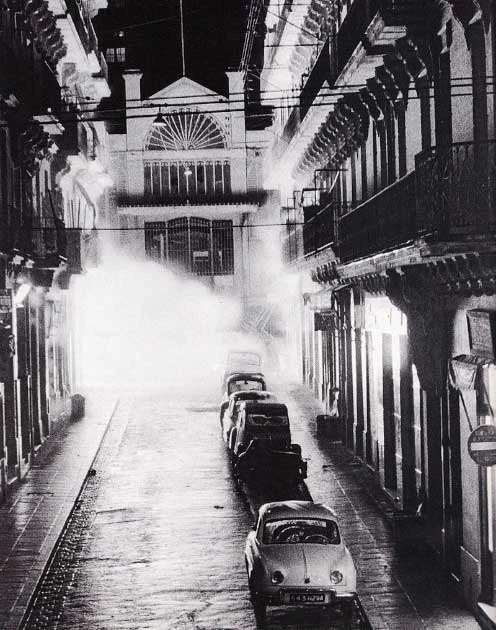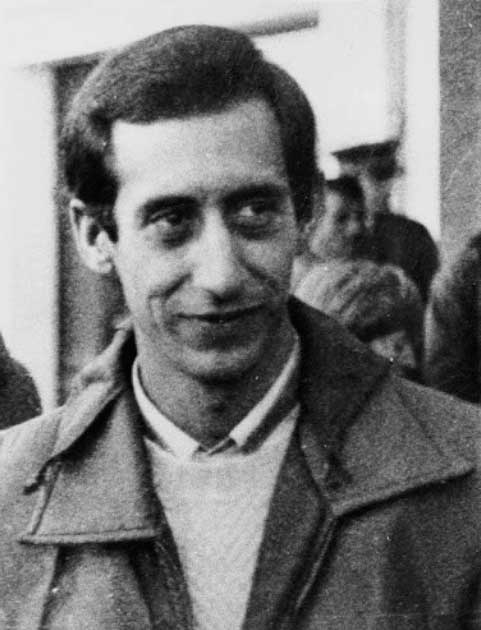Jean-Pierre Cherid was born in 1940 in Algiers and grew up to be a far-right French activist and mercenary of Moroccan descent. He was a former French Paratrooper and became a member of the Organisation Armee Secrete (OAS) during the Algerian War which raged from 1954-1962.
He later turned up in Spain in 1976 and participated with the far-right mercenaries that were employed by Spanish secret services. He took part in the infamous terrorist attack there known as the Montejurra massacre.
He also repeatedly attempted to assassinate Charles de Gaulle, France’s talismanic post-war President, and was successful in the 1978 assassination of Argala, a prominent Basque separatist. Who was this man, who lived so violent a life?
Organisation Armee Secrete
Little is known about Jean-Pierre Cherid’s early life other than that he served in the French army as a paratrooper during the Algerian War. Whilst here he became involved with the Organisation Armee Secrete.
This far-right organization of paramilitary personnel was created during the Algerian War. It carried out terrorist attacks including assassinations and bombings. Its purpose was to prevent Algeria’s independence from French colonial rule.
The OAS was created using existing networks that referred to themselves as “counter-terrorists”, “self-defense groups”, or simply the “resistance”. They had carried out attacks on the Algerian National Liberation Front and their supporters.
Officially it was formed in Spain in January 1961 in response to the referendum on self-determination for Algeria organized by Charles de Gaulle. French and Algerian history in the 19th and 20th centuries is a dark and twisted story, and de Gaulle’s offer for self-determination, although morally right, angered many who believed in the supremacy of France.

The group targeted France and French Algerian territories resulting in the deaths of around 2,000 people over a two year period starting in April 1961. During this period of time, it is likely that Jean-Pierre took part in these attacks and is known to have been part of the attempts on de Gaulle’s life.
In France, the OAS members were recruited from among the fascist political groups. In Algeria, its political makeup was a little more diverse and was headed by Algerian Jews under Jean Guenassia who were responding to the Algerian National Front’s attacks on Jewish quarters.
The first victim of the OAS was Pierre Popie who was the attorney and president of the People’s Republican Movement, a democratic Christian organization in France. He had stated on national TV that “French Algeria is dead”. The next was Roger Gavoury, the head of the French police in Algiers. Throughout their attacks, they became renowned for using plastic explosives.
One of their main goals was to assassinate French President Charles de Gaulle. One of their most prominent attempts was at Petit-Clamart, a Paris suburb, on the 22nd of August. De Gaulle’s convoy was ambushed as he left the Presidential palace and his limousine was riddled with bullets, but de Gaulle survived.
The plan, masterminded by Jean Bastien-Thiry but certainly with Cherid’s help, had failed. Bastien-Thiry was executed the next year after de Gaulle refused to grant him amnesty.
The OAS use of extreme violence caused strong opposition in Algeria and France. Its extreme views and actions gained it enemies with both the French secret service and the Gaullist paramilitary. However, by the start of 1963 most of the operatives were in jail or dead.
Many moved away from France and began to take part in anti-communist struggles around the world. This is how Cherid ended up in Spain, now a rebel looking for a new cause.
The Montejurra Massacre And the Spanish Secret Service
It would be 1976 before Jean-Pierre Cherid appeared in Spain. He had fallen in with the far-right mercenaries hired by the Spanish Secret Services to take part in the Montejurra Massacre against the left-wing Carlist Party.
This was a socialist party set against the Franco regime, anathema to Cherid and his nationalist friends. Accordingly, on the 9th of May the neo fascists, likely including Cherid, attacked. It resulted in the death of two Carlist members whilst another three were seriously injured.
The Carlist group also came under attack by Franco’s supporters. It was plain to see that the government was involved so much so that the British magazine The Economist wondered aloud about how in such a strict region, more than 50 gunmen had managed to find 24 hours to set themselves up for an ambush and open fire without attracting attention.
After the attack, Cherid remained in touch with the same members of the intelligence service within Spain. At the time they were organizing an illegal war against ETA, a nationalist organization in the Basque country. It was during this time that he took part in the assassination of José Miguel Beñaran Ordeñana, a Basque Separatist better known as Argala.
Argala was a member of ETA and had organized the assassination of Franco’s prime minister, Luis Carrero Blanco, in 1973. The car bomb which killed Blanco blew the car so high into the air that he was posthumously nicknamed “Spain’s First Astronaut”.
Argala was also killed by a car bomb, and although no organization claimed responsibility for the murder at the time it was clear that violent nationalists were involved, possibly with governmental support.

Cherid moved on to try and assassinate Txomin, another ETA activist but failed. He was more successful with the assassination of Enrique Alvarez and Jose Martin Sagardia, two further activists, as he lashed out at any who conflicted with his views on nationalism.
Cherid’s Death
Cherid died on the 19th of March in 1984 in an explosion: his death was as violent as his life. According to contemporaries, it was a surprise that Cherid died in this way. He was an experienced explosive operative and yet seemed to have been killed by a malfunction in his own equipment.
There doesn’t seem to be any sinister motivations for his death and in fact, it was even seen in some quarters as a blow to the Spanish Secret Service. Jean-Pierre was a veteran operative and was well respected within the organization. He would be difficult to replace.
According to one account of his death, the bomb he was setting exploded prematurely. It had been intended for a large group of ETA members, but ended up only killing its creator. The explosion was big enough to dismember him and some of his body landed on a nearby house. It was only the fact that his driving license had survived that he was identified despite the name on it being fake.
Cherid’s family applied for a pension from the Spanish ministry and was apparently successful in receiving a life pension, though officially this has always been denied. As late as 2008, Cherid was still being accused of new crimes.
He was suspected of having an involvement with another ETA activist named Pertur and his disappearance in 1976, which is when Cherid first appeared in Spain. As well as this, he was suspected of managing a house outside of Barcelona where kidnapped people would be tortured on behalf of the Spanish Intelligence Services.
Cherid was a violent nationalist who fought for the leaders of whichever country and whatever cause he could find. Whether for the French against Algerian separatists or the Spanish against Basque separatists, his indiscriminate approach to death and murder made his ultimate end somewhat fitting. He was a mercenary to the end.
Top Image: Jean-Pierre Cherid would find common nationalist cause with both the French and the Spanish. Source: Minerva Studio / Adobe Stock.
By Kurt Readman